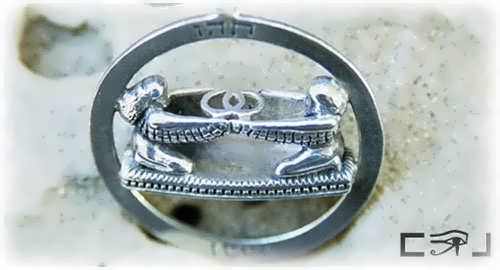The Vesica Pisces is composed of two spheres with the same radius, which intersect within each other’s circumference. The name of this symbol, when translated literally from Latin, means ‘bladder of a fish.’ This symbol figures prominently Pythagorean history and is considered a holy figure because the ratio of its width to its height was believed to be 165:153 or 1.73203—a holy number. It should be noted that the number 153 is written in the Gospel of John as the number of fish that Jesus miraculously caught. Because of this, some believe that it is the symbol for Jesus Christ (ichthys). The shape was also said to be found in the Ark of the Covenant.
There are many other mystical meanings attributed to the Vesica Pisces. It is, for instance, said to be the symbol of how the God and the Goddess join together to create offspring. History also traces the use of the Vesica Pisces in medieval art, sculptures, and paintings. In Sacred Geometry, this symbol is the basic shape or pattern for the Flower of Life and the Tree of Life. It is also said to be a symbol or description of harmonic proportions and even as a source of strength and power.
» Amulet
» Ajna
» Arsenic
» Merkaba
» Hung
» Yin Yang
» bindi
» IK Onkar
» Khanda
» Halo
» jiahu
» Tau
» Uraeus
» Menorah
» Quincunx
» Tilaka
» Taijitu
» Vajra
» Chai
» Chi Rho
» Bagua
» Dragon
» Hunab Ku
» Caduceus
» Infinity
» Ichthus
» Hedjet
» Lauburu
» Om
» Ankh
» Chalice
» Pentacle
» Maat
» Ogham
» Mandala
» Kartika
» Khamsa
» Heart
» Labrys
» Sun Face
» Raven
» Triskele
» Scarab
» Dove
» Hanukia
» Anubis
» Trishula
» Durga
» Mezuzah
» Bay Tree
» Geruda
» Kinnara
» Quito
» Condor
» Blue Jay
» Falcon
» Makara
» Rosary
» Uluru
» Apsaras
» Hanuman
» Serpent
» Minotaur
» Mercury
» Apex
» Vestra
» Yoni
» Astarte
» dakini
» Calabash
» Mandrake
» Rebis
» Typhon
» Vegvísir

